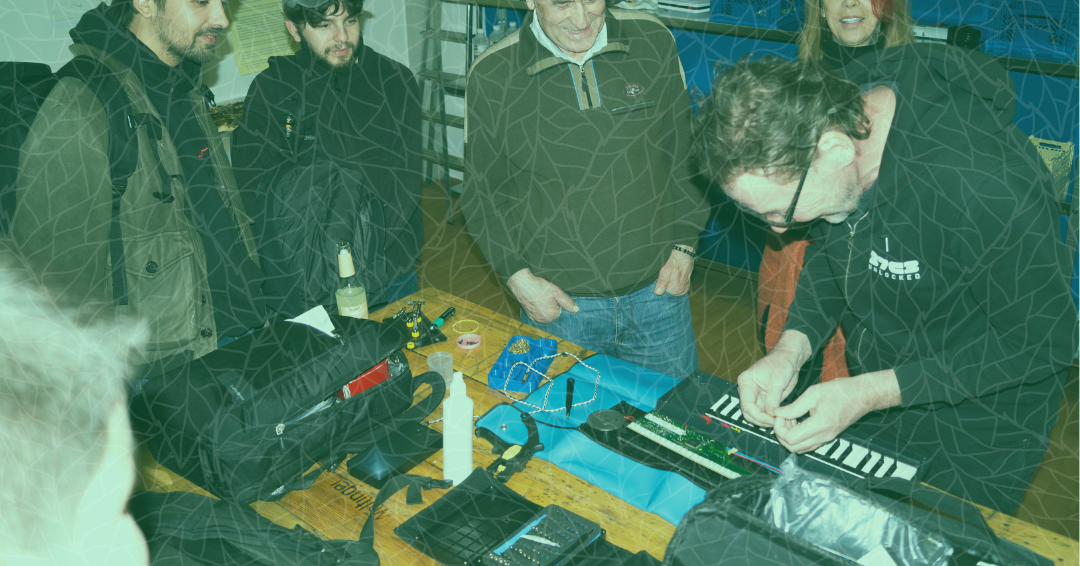Sisyphus King of Corinth cheated death by making his wife promise not to give him a proper burial. She threw his body into the market with no coin for passage into Hades - and Persephone, queen of the underworld, sent him back so that he could torture his wife appropriately for deceiving the gods. When it came for Sisyphus to die in old age, the gods openly offered him the chance of immortality by presenting him with a giant rock. Knowing the task to be impossible, they set him a challenge: push the rock to the top of a hill and gain never-ending life.
As the philosopher Albert Camus summarised, ‘The gods had condemned Sisyphus to ceaselessly rolling a rock to the top of a mountain, whence the stone would fall back of its own weight. They had thought with some reason that there is no more dreadful punishment than futile and hopeless labor.’ David Graeber might say that Sisyphus was given a 'bullshit job', defined in his controversial essay as labour which inflicts a 'psychological violence' upon employees: "How can one even begin to speak of dignity in labour when one secretly feels one's job should not exist?".
From one perspective Sisyphus gained an immortality to which death would be preferable. Alternatively, he can be seen as a hero struggling for a beautiful idea. As outlined by Stephen Fry, in Sisyphus, "Painters, poets and philosophers... have seen an image of the absurdity of human life, the futility of effort, the remorseless cruelty of fate, the unconquerable power of gravity. But they have seen too something of mankind's courage, resilience, fortitude, endurance and self-belief. They see something heroic in our refusal to submit".
Generally, the myth cautions that we should not cheat divine law. Sisyphus sits in a pantheon of friends given regrettable immortalities for their hubristic 'interventions' and used to criticise human greed.
Such are the myths which came to mind when I read the report titled 'The State of Carbon Dioxide Removal (CDR)', published 19th Jan 2023. [Report]. It was presented as ‘a first-of-its kind, independent, scientific assessment.’ Rather than questioning the quite genuine commitment of Science to climate change and researchers working on certification frameworks, the Myth of Sisyphus highlights a clear problem with the ontology of sustainability Science itself.
The 'hill' is the Paris Agreement - a legally binding commitment to limit global warming to 2 degrees and achieve a climate neutral world.’ The Climate Change Report (IPCC) recognised carbon capture as one means to approach net zero.
The IPCC defines CDR as “human activities capturing CO2 from the atmosphere and storing it durably in geological, land or ocean reservoirs, or in products. This includes human enhancement of natural removal processes”.
Science turned up at the hill with two arms and two legs and the hill was already there, and so was the rock.
The rock represents the burden of getting to net zero by developing CDR.
Science picks up the rock.
Policy and Science meet at the hill.
Dr. Jan Minx has argued that ‘the state of CDR research, development and policy lags behind - similar to renewables 25 years ago.’ The State of CDR report similarly claims that “twenty years ago, renewable energy was a niche sector. Today, the picture is radically different…CDR is at the start of a similar journey”.
Science gives CDR a determined trajectory and makes 'catching up' the problem. The report shifts attention away from the question of whether it is even appropriate to develop CDR as 'a solution', or the reversibility of CDR. Rather, science argues that Policy should fund research.
Science convinces policy that never-ending life depends upon them rolling CDR to the top of the hill together.
Policy picks up the rock.
CDR is grouped into 'conventional' and 'novel' types. The work that plants do is increasingly recognised but 'Science' agrees that 'conventional CDR' is not enough to limit warming to 2 degrees. Strangely, even more CDR technologies are proposed.
This is problematic because developing novel CDR risks channelling huge investment and energy into futile labour.
"Costs at scale and mitigation potentials are judgements based on the literature; these are particularly uncertain for methods with a Technology Readiness Level around 7 and below" (The State of Carbon Dioxide Removal, p.18).
Technology Readiness Level refers to the stage a technology is at between its conception and commercial deployment. For example, a technology with readiness level 3 has ‘experimental proof of concept’. Level 4 indicates it has been ‘validated in a lab’. Novel CDRs are 'generally at a TRL below 8–9' and just under half score 7 or below. As the report states, this means that the efficacy, or mitigation potential, of these novel technologies is currently ‘uncertain’ and that they carry unknown and known risks.
Crucially, it is not a given that these novel technologies will ever be efficient no matter how much money is channelled towards ‘evolving’ them to a higher TRL. Strangely, this does not deter Science.
"To limit warming to 2C or lower, we need to accelerate emissions reductions. But the findings of this report are clear: we also need to increase carbon removal too' (The State of Carbon Dioxide Removal, p.5).
The findings in this report are 'clear' in so far as current emission reductions are insufficient, CDR is not a solution, is less researched than renewables, though could possibly work if new technologies are invented, but this is uncertain.
The novel CDR data available lists 84 projects opening by 2030, including the 'Carbon Engineering Project Dreamcatcher', which has a projected gross removal of 1,000,000 tCO2/year. This data does not show that the process of producing 1300 times more CDR technologies produces CO2.
Pushing CDR up the hill risks the rock getting bigger, squashing life on the hill. The report makes this clear when it indicates the 'example hazards' which are assigned to each technology readiness level. Neither the hazards nor uncertainty disappear as TRLs increase.
For example, ‘Afforestation/reforestation’, which has a TRL of 8-9, lists as example hazards “reversal of CDR through wildfire, disease, pests, reduced catchment water yield and lower groundwater level if species and biome are inappropriate. Finite carbon capacity of land; capacity may be reduced under climate change”. This is weighed against “possibly less pressure on primary forest”, and “enhanced employment, improved biodiversity”.
To help manage uncertainties and risks associated with CDR at large scales, our dependence on it should be limited by reducing emissions faster. (The State of Carbon Dioxide Removal, p.8).
Science next 'forgets' that developing CDR produces emissions. Science passes the rock to Policy and goes for an ice cream.
The strongest indication that this report gives unreliable policy advice is the framing of research in CDR as a source of economic growth. It presents a pitch which adopts the language of growth and its exponential curve; CDR becomes a company 'falling behind'; publications transform into GDP and research splits into 'shares'.
Publication quantity is related to 'growth in CDR innovation', measured here by patents, public investment and purchases of CDRs. This evidences that findings produce 'inventions' from which profit can be captured. Market demand for these inventions becomes an indication for the validity of CDR.
But market demand for CDR cannot directly reflect its efficacy. The success of CDR in the market merely reflects its economic viability and consumer trust in ‘Science’. Policy bolsters this public trust by translating advice into action. Coming full circle, this strengthens market demand for CDR.
As such the report devotes considerable space to measuring Tweets, not because these indicate that CDR works, because they offer a metric for public acceptance and marketability.
Studies find a preference among participants for CDR methods perceived or framed by researchers as more “natural” (The State of Carbon Dioxide Removal, p.47).
Science seems to have forgotten Science at this point. It is marketing.
This points to a major tension. Science cannot be 'independent' when it seeks to leverage research because this generates innovation, and thus profit. Policy advice given on climate change depends upon the stance ‘Science’ takes towards the economy.
If stances towards CDR depend upon individual values, which are coproduced in dialogue with society, you cannot ignore that scientists themselves have a stance towards CDR conditioned by a desire at large to meet net-zero whilst maintaining a socio-economic paradigm. In other words, the choice to pick up and push CDR is the product of Science’s pre-existing disposition. Science and its rock are a reflection of one another.
Work by Mario Giampietro and Silvio Funtowicz better explains how this ontological disposition is formed through the modes of enquiry which constitute the 'normal science' paradigm - not questioned by Policy in so far as it seems appropriate. It is indeed advantageous not to contest findings which, when applied, suggest policy makers are achieving their goals. Scientific findings may serve plural goals simultaneously, eg. 'China and the US are surging ahead with technology development'.
This report contains many instances of reflexivity and asks for ‘peer-review’. But it passes the rock to friends who have two arms and legs, and are accustomed to carrying rocks in such a way. This suggests that it will be difficult to imagine scenarios beyond growth and, as James Palmer and Carton write, 'a societal discussion about the kind of energy futures that such technologies represent and the selective ideas of human progress implied within them'.
How might this change? It requires interdisciplinarity. Less than 3% of research on CDR is published by the humanities. You have to ask what policy advice might be given if sustainability science were to include these perspectives.
Sisyphus might paint the rock, stand back and think about how he creates meaning from the data before him. He might use his left hand to unlearn and destabilise his usual way of mark making and find a new perspective. Then he might think about the absurdity, changing rock and even landscape gardening the hill.
This article was based on an earlier version on the author's blog, including further images, which you can read here.

Kreisler, a space of community repair and share in Berlin that offers a hands-on response to the crises of overconsumption, social isolation, and infrastructural neglect.

The world crumbles around us. Wealth inequality is deepening while the human species is facing an existential crisis. Despite calls to accept neoliberalism as inevitable, our situation is not hopeless. However, placing hope in yet-to-materialize technology to address ecological crises and wealth inequality is audacious. Narratives like “green growth”, “ecomodernism”, and “accelerationism” ...

Despite an ever-increasing interest in degrowth scholarship, science, technology, and innovation (STI) have only been discussed marginally. It is vital to imagine different forms of STI not bound by the persisting growth imaginary.